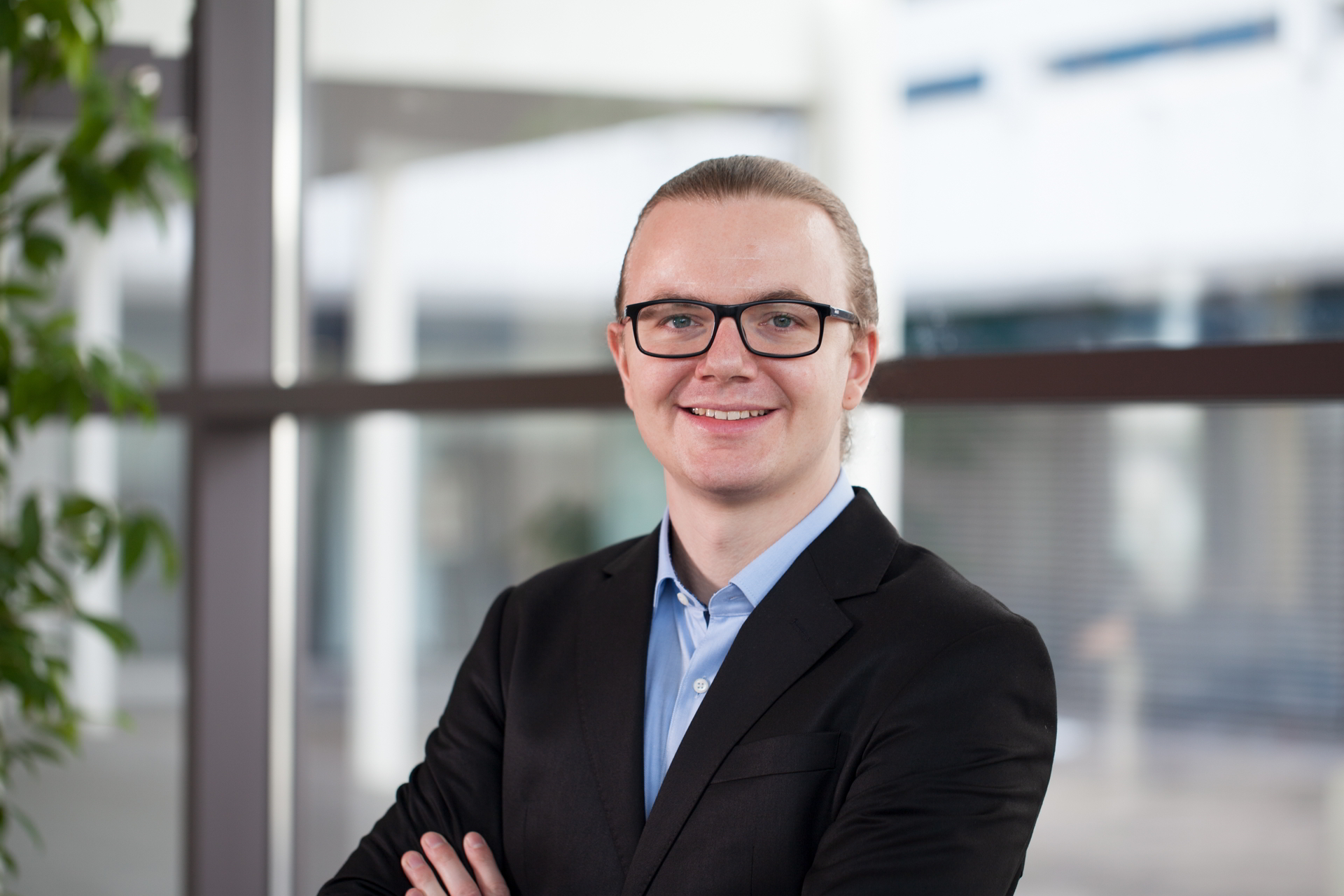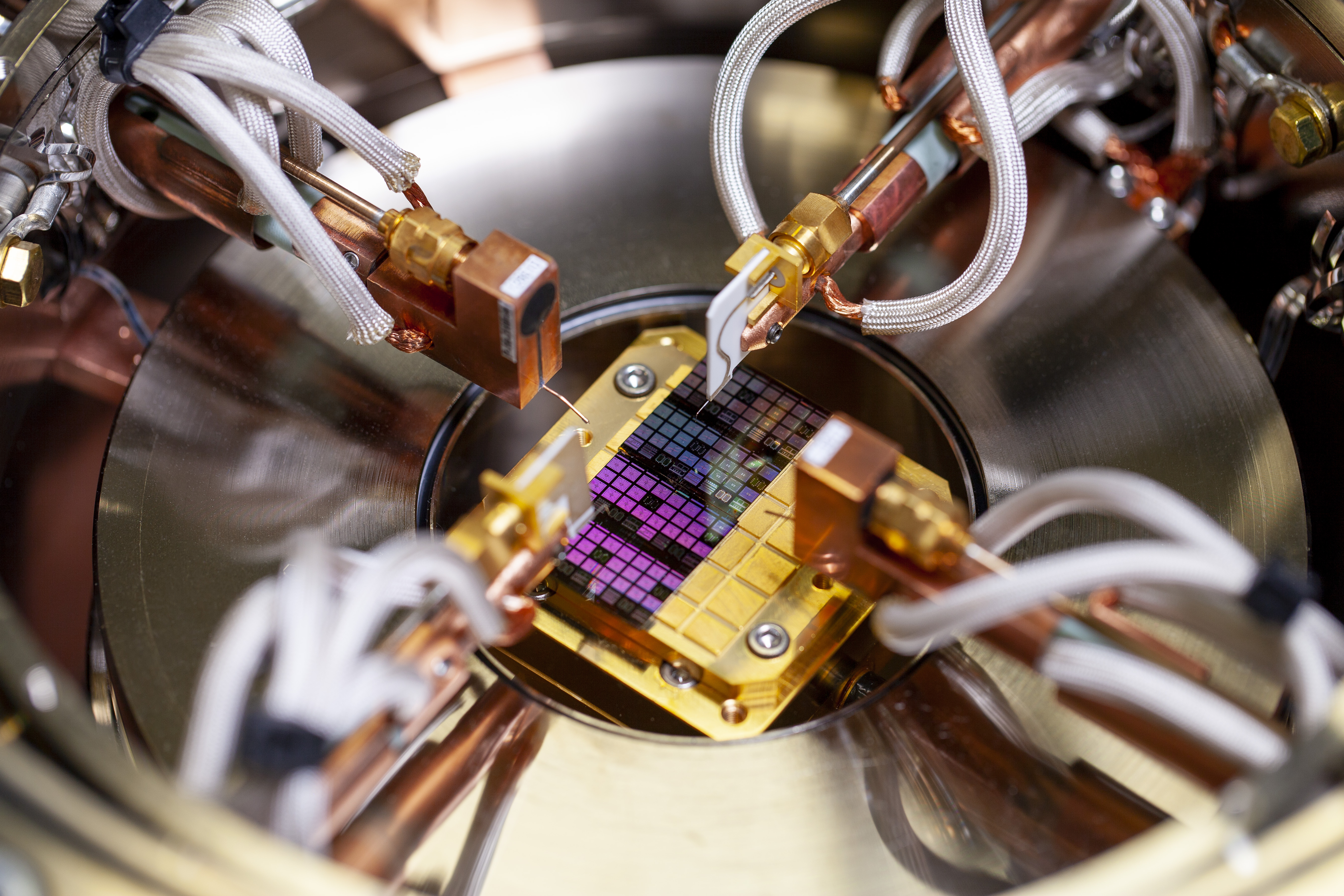Dr. Felix Heinz did his PhD at Fraunhofer IAF in the field of microsystems engineering on ultra-low noise amplifiers. He is part of the modeling group in the department of microelectronics and works on cryogenic, low-noise high-frequency amplifiers used in radio astronomy and quantum computing.
“The excellent HEMT technology and the IAF’s high-tech laboratory equipment make working here very attractive for me.”
Interview with Dr. Felix Heinz, researcher in the Microelectronics Department at Fraunhofer IAF
How and when did you come to Fraunhofer IAF?
I joined Fraunhofer IAF in 2017 after finishing my studies. Before that, I did my Master’s degree in Embedded Systems Engineering at the University of Freiburg and attended a lecture by Prof. Rüdiger Quay on high-frequency electronics. As part of the lecture, there was a clean room tour at IAF. While visiting the institute, I realized that it is possible to write master’s theses here. Which I did! Following my master’s thesis at IAF, I immediately stayed here for my PhD and since then I have been working in the modeling group in the microelectronics department. I finished my PhD in May 2022.
What are you working on right now and what do you like about it?
Currently, I am working on cryogenic, low-noise radio-frequency amplifiers that are used in radio astronomy, but also in quantum computing. We are researching to further reduce the electronic noise of the amplifiers in order to use them to receive extremely weak electromagnetic signals, such as those from space or from quantum bits (qubits). To make this possible, the amplifier must be cooled to about 4 Kelvin (-267.15° Celsius). Cooling down reduces the inherent noise of the amplifier, since thermal noise is linearly dependent on the temperature of the amplifier.


Cryoelectronics may be a niche topic, but you can push the technical limits and it’s pretty cool. For example, Fraunhofer IAF’s metamorphic high-electron-mobility transistor (HEMT) technology is one of the lowest-noise transistor technologies in the world. Also, my work is pretty diverse: I characterize and model devices, design circuits, and manage projects. It is the work on high-tech electronics that fascinates me.
What are your current tasks and goals in the field of cryoelectronics?
The main goal of our work is to further reduce the noise of our HEMT amplifiers at cryogenic temperatures. We also want to reduce the size and power consumption of the amplifiers. This is important, for example, in future quantum computers where the number of qubits will be greatly increased to perform error-corrected calculations. Since a cryogenic HEMT amplifier can only read out a few qubits at a time, the number of these amplifiers must also be greatly increased. Accordingly, it is important to keep the DC power consumption and amplifier size as small as possible. To achieve this, I am developing multi-channel amplifiers that can read out a larger number of qubits.
I also work on optimizing our active and passive electronic components for extremely low-noise cryogenic amplification. To do this, I develop CAD models that predict the electrical behavior of the individual components at cryogenic temperatures as accurately as possible. Using these models, we try to achieve improvements in the amplifier circuits, but also of the technology.
How important are collaborations for your work?
Collaborations are enormously important to stay in touch with system developers and users. For example, we have a cooperation with the Max Planck Institute for Radio Astronomy, who uses cryogenic HEMT amplifiers from Fraunhofer IAF in their radio telescopes. We are also working intensively with partners in the quantum computing projects QBriqs and MuniQC-SC. Here we are developing scalable packaging technology for our HEMT amplifier chips, such as small form factor multi-channel modules for reading out qubits. We are also trying to integrate superconducting materials into our amplifiers to achieve even lower noise.
What makes your work here at the Fraunhofer IAF particularly attractive to you?
At Fraunhofer IAF, I have the opportunity to work in a very self-determined way and I can define many of my research topics myself or at least actively help to shape them. I also appreciate the flexible working hours and the independent work here. The possibility to work with the excellent HEMT technology as well as the access to IAF’s high-tech laboratory equipment make working here super attractive for me.
What's next for you in the next few years?
For the time being, I plan to stay at Fraunhofer IAF as a scientist and project manager. My PhD is recent and I would like to further my experience in scientific project management. I also want to remain active in the area of circuit design and modeling.
Do you have a favorite place in Freiburg? If so, can you share it with us?
I like the Cafe Pow very much. The ideal location to enjoy a good cappuccino outside in a courtyard in the usually warm Freiburg summer. Otherwise, I really appreciate Freiburg’s proximity to the Black Forest, where you can go hiking in summer and skiing in winter.
 Fraunhofer Institute for Applied Solid State Physics IAF
Fraunhofer Institute for Applied Solid State Physics IAF